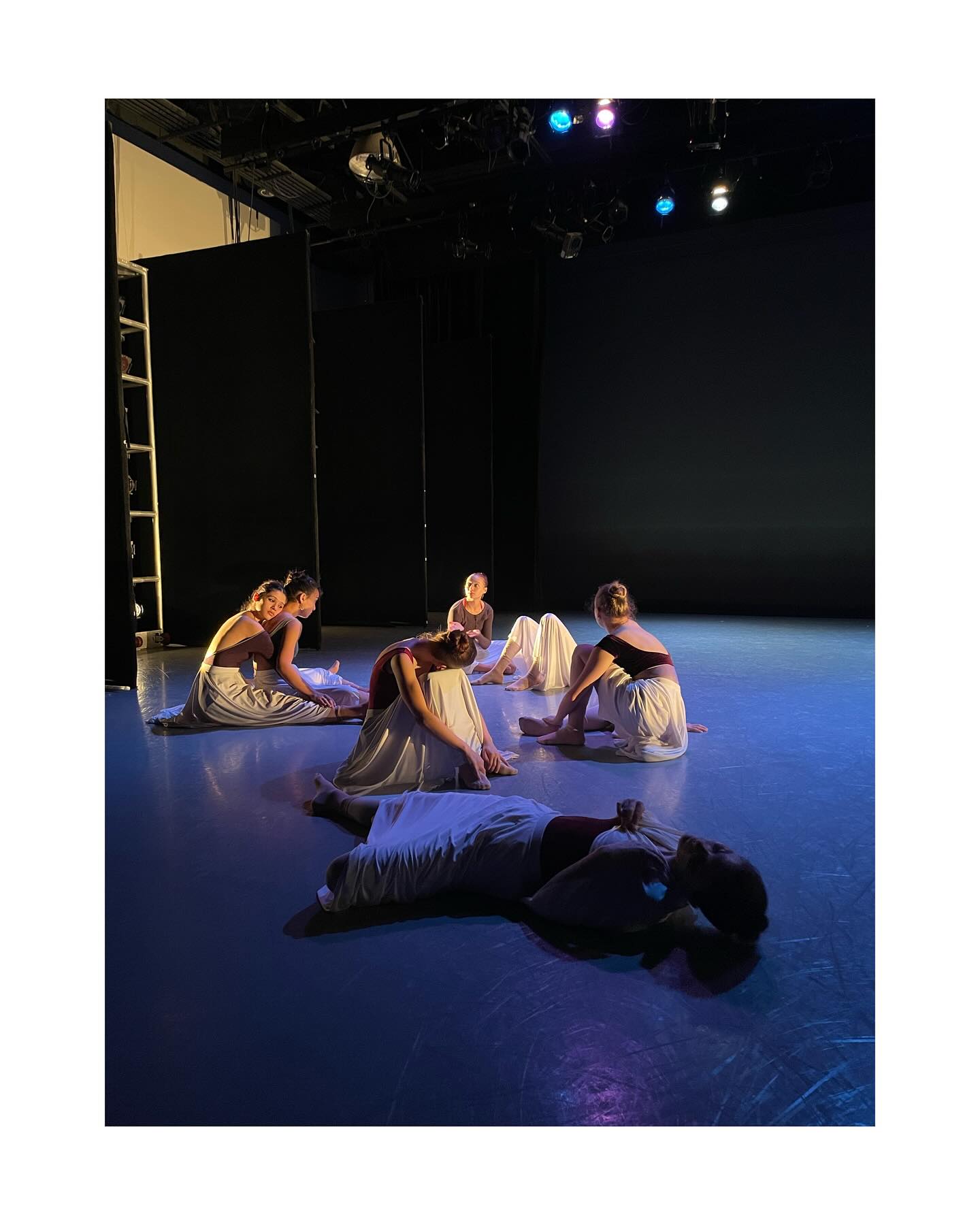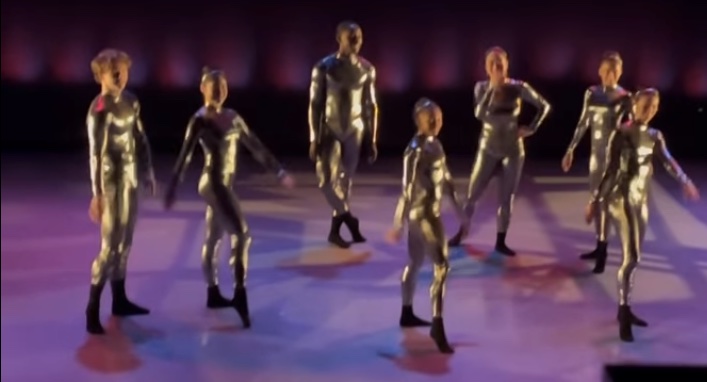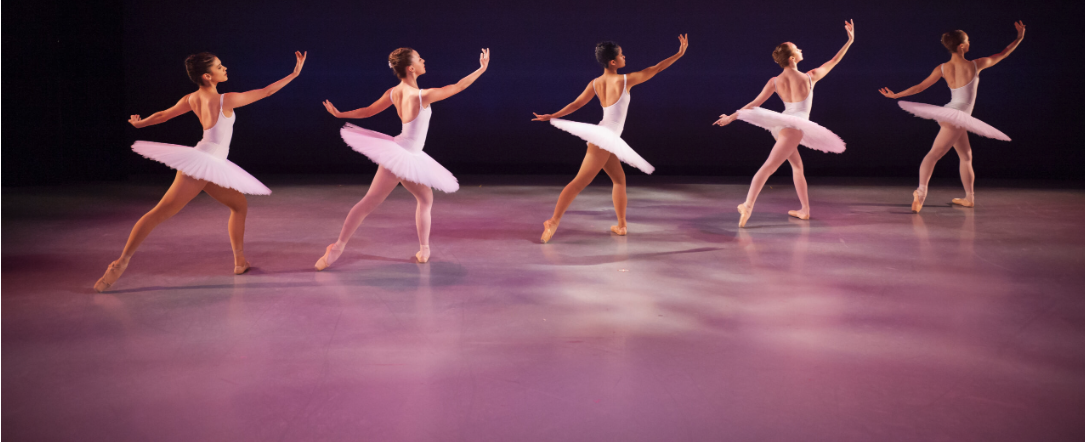Review: Ballet Austin Two and Butler Fellowship Program Spring 2024 Show by Ballet Austin Two
by David Glen Robinson
2024 Spring Performance by Ballet Austin Two and the Ballet Austin Butler Fellowship Program has just been performed at Austin Ventures Studio in Downtown Austin. It was given over one weekend, March 1 and 2, 2024. The show was easy to miss because of that brief performance life, and that is a loss to all the ballet mavens and committed fine arts aficionados of Austin. Take heart, it lives as an annual series.
The series has life because of the generous full endowment of the program by the Butler family. Sarah and Dr. Ernest Butler are described as dedicated philanthropists, a designation certainly apt. The Butler family fund has made several sustaining contributions to Ballet Austin and other arts organizations. Dance/USA, a service organization for professional dance, has declared the Butlers “National Champions” for their immense support of dance. The dance fellows receiving that support work full time at the dance but may take classes or enjoy other pursuits on their own time. They live on salary but also have their own lives. And that is a rare, enviable blessing. This writer counted seventeen fellows at the curtain call of their showcase performance, “Petipa Divertissement.”

The performance this spring was presented under three titles, in order: “Petipa Divertissement,” “To the Hiding.” And “Heliopause.” The first dance, “Petipa Divertissement,” was of course choreographed by Marius Petipa, the Master of Ballet of the St. Petersburg, Russia ballet. His fame flew across Europe for most of the nineteenth century (he died in 1910 at the age of 92). Petipa’s many choreographed dances are exemplars of classical ballet, including “Don Quixote,” “The Sleeping Beauty,” “The Nutcracker,” and “Harlequinade.” The Butler fellows’ rendition of the “Petipa Divertissement” remained true to classical values, especially those of the divertissement. That French mouthful, translated as entertainment or distraction,is an essential classical form in which dancers break free from whatever story is being told in dance, and as individuals and groups they return to the stage and give demonstrations of technique as they have mastered it. It is their performance review, to use crass commercial business terms. And it is a grueling challenge for dancers under hot stage lights, exposing their talents for review. Traditionally, audiences are encouraged to respond with their applause in support. The Butler fellows certainly deserved such, given their high talent levels, showing us their smooth leaps and close duets that looked almost like the tiny romantic figures in snow globes. With Petipa unavailable, the adaptation and staging fell to Jennifer Hart of Ballet Austin Two and Performa/Dance and to Ballet Austin's Michelle Martin and Christopher Swaim.
 “To the Hiding” is the latest piece by Alexa Capareda, who created for Ballet Austin Two “Maria and the Mouse Deer,” still on tour. Anything but classical, “To the Hiding” seemed to borrow from every new form of dance innovated since classical times. The dance began with the sweeping gestures and entrances we expect of ballet. Soon after that, the dancers performed everyday facial and hand gestures, of kinds not seen in ballet. One duet seemed to show some emotional conflict, and the whole group continued with diverse rather than uniform movements. In a longish, intriguing transition, one dancer after another picked up, of all things, hip-hop dance rhythms and gestures. The differences were clear: the dancers initiated movements from arms and legs shaped in right angles of knees, elbows, ankles, and wrists. Some gestures were repeated rapidly in succession, off-rhythm. Gone, for the moment, were ballet’s fully extended arms and legs spoking to high and low diagonals and sweeping in multiple 360° turns. Another difference was floorwork. Unlike the “Petipa Divertissement,” with its high centers of gravity, toes brushing the floor, pads and heels in unnatural turnouts, arabesques, and battement, the dancers of “To the Hiding” sat or knelt on the floor as preparation for movement and from those positions they launched movement sequences. But the piece did not become a hip-hop showcase. The blends and borrowings from several modes continued, held together by ballet. Significant to the changes in perspective were the costumes. The dancers wore layered white costumes with floor length skirts. They were interactive and surprising. The dancers lifted and posed with the skirts at their chests, draped like classical statuary. And then---they removed the skirts and played even harder, swirling them and wearing them like capes, piling them all together on the floor like a bed, and wearing them like hooded garments. The costume play carried through the end sequence that spoke to the meanings suggested by the title. Seated dancers facing upstage draped the skirts over themselves in such a way that they resembled pods containing humans, or eggs, or perhaps mushrooms. That tableau ended the dance, the group finding its hiding, fancifully and in separated isolation, perhaps in healing withdrawal. “To the Hiding” gave us, as is common in modern fine arts, a little-known node of the psyche, the search for sanctuary. The need for it was established by the fine arts throughout the Age of Anxiety in much of the twentieth century. Capareda’s heartfelt, innovative, inspiring, and very, very creative “To the Hiding” showed us knowing and care for the sorrow in all our hearts. A reminder: these were the same Butler fellows dancers of “Petipa Divertissement,” showing immense flexibility and diversity in their mastery of Capareda’s choreography. Kudos to the dancers; kudos to Capareda.
“To the Hiding” is the latest piece by Alexa Capareda, who created for Ballet Austin Two “Maria and the Mouse Deer,” still on tour. Anything but classical, “To the Hiding” seemed to borrow from every new form of dance innovated since classical times. The dance began with the sweeping gestures and entrances we expect of ballet. Soon after that, the dancers performed everyday facial and hand gestures, of kinds not seen in ballet. One duet seemed to show some emotional conflict, and the whole group continued with diverse rather than uniform movements. In a longish, intriguing transition, one dancer after another picked up, of all things, hip-hop dance rhythms and gestures. The differences were clear: the dancers initiated movements from arms and legs shaped in right angles of knees, elbows, ankles, and wrists. Some gestures were repeated rapidly in succession, off-rhythm. Gone, for the moment, were ballet’s fully extended arms and legs spoking to high and low diagonals and sweeping in multiple 360° turns. Another difference was floorwork. Unlike the “Petipa Divertissement,” with its high centers of gravity, toes brushing the floor, pads and heels in unnatural turnouts, arabesques, and battement, the dancers of “To the Hiding” sat or knelt on the floor as preparation for movement and from those positions they launched movement sequences. But the piece did not become a hip-hop showcase. The blends and borrowings from several modes continued, held together by ballet. Significant to the changes in perspective were the costumes. The dancers wore layered white costumes with floor length skirts. They were interactive and surprising. The dancers lifted and posed with the skirts at their chests, draped like classical statuary. And then---they removed the skirts and played even harder, swirling them and wearing them like capes, piling them all together on the floor like a bed, and wearing them like hooded garments. The costume play carried through the end sequence that spoke to the meanings suggested by the title. Seated dancers facing upstage draped the skirts over themselves in such a way that they resembled pods containing humans, or eggs, or perhaps mushrooms. That tableau ended the dance, the group finding its hiding, fancifully and in separated isolation, perhaps in healing withdrawal. “To the Hiding” gave us, as is common in modern fine arts, a little-known node of the psyche, the search for sanctuary. The need for it was established by the fine arts throughout the Age of Anxiety in much of the twentieth century. Capareda’s heartfelt, innovative, inspiring, and very, very creative “To the Hiding” showed us knowing and care for the sorrow in all our hearts. A reminder: these were the same Butler fellows dancers of “Petipa Divertissement,” showing immense flexibility and diversity in their mastery of Capareda’s choreography. Kudos to the dancers; kudos to Capareda.
 And here they came again, in Jennifer Hart’s “Heliopause,” perhaps the first current treatment of the total eclipse of the sun, not yet experienced in Austin (April 8, 2024, is the date). The two-word phrase for this incredible abstraction with full use of ballet technique is: sheer fascination. Three Butler fellows dancers entered down the upstage left diagonal in form-fitting metallic costumes with matching caps worthy of any number of 1930s Art Deco fashions by Erté or perhaps of Buck Rogers-type spacemen. The trio thus introduced stayed together throughout the dance and formed many floor patterns against which other dancers, all similarly costumed, performed. The through-trio performed in measured tempo throughout, accenting their movements with unison quirky bladed hand gestures, and subtly guiding the pace of the focal duets and solos. The music was credited to Anne Müller, but it could have been Holz’s The Planets. In an interesting harmony of the dance and lighting design, every time there was a change in the hues of Steven Myers’s lighting sets, the highly reflective costumes changed color. It was as if every color change were a new chapter in the story danced on stage. It was traditional ballet in other guise. Very well appreciated. Miriam Jurgensen of Ballet Austin is the costume designer for “Heliopause” and “To the Hiding.” The costumes of “Petipa Divertissement” are properties of Ballet Austin, Alexey Korygin, Wardrobe Director.
And here they came again, in Jennifer Hart’s “Heliopause,” perhaps the first current treatment of the total eclipse of the sun, not yet experienced in Austin (April 8, 2024, is the date). The two-word phrase for this incredible abstraction with full use of ballet technique is: sheer fascination. Three Butler fellows dancers entered down the upstage left diagonal in form-fitting metallic costumes with matching caps worthy of any number of 1930s Art Deco fashions by Erté or perhaps of Buck Rogers-type spacemen. The trio thus introduced stayed together throughout the dance and formed many floor patterns against which other dancers, all similarly costumed, performed. The through-trio performed in measured tempo throughout, accenting their movements with unison quirky bladed hand gestures, and subtly guiding the pace of the focal duets and solos. The music was credited to Anne Müller, but it could have been Holz’s The Planets. In an interesting harmony of the dance and lighting design, every time there was a change in the hues of Steven Myers’s lighting sets, the highly reflective costumes changed color. It was as if every color change were a new chapter in the story danced on stage. It was traditional ballet in other guise. Very well appreciated. Miriam Jurgensen of Ballet Austin is the costume designer for “Heliopause” and “To the Hiding.” The costumes of “Petipa Divertissement” are properties of Ballet Austin, Alexey Korygin, Wardrobe Director.
Kudos to Jennifer Hart for the choreography of “Heliopause.” She continues to seek new pathways for ballet in the twenty-first century, and she reports solid accomplishments. She and Alexa Capareda insist that their blends and hybrids are nothing more than essential ballet. We agree joyously and look for more.
The seventeen Butler fellow dancers deserve great recognition. They are, in no particular order: Reagan Arenz, Amelia Bednar, Anika Crouser, Celena Fornell, Katelyn Hagel, Angelina Carbonaro, Carly Darnell, Alexa Dollar, Alayna Hamade, Nya Tinio-Mitchell, Isabelle Lapierre, Jordan Lovelace, Alexandra Owens, Jackson Rankin, Elianna Price, Claire Sturgeon, and Ava Tellier. We look forward to seeing them in more dances in the future. Each of their futures is bright.
Ballet Austin Two and Butler Fellowship Program Spring 2024 Show
Ballet Austin Two
March 01, 2024
Performances at Ballet Austin
Location:
- Ballet Austin, 501 West 3rd St., Austin, 78701
Date & Time:
- March 1, 2024 at 12pm
Ticket Prices:
- $6 per person (students, teachers, chaperones) for Title I schools
- $10 per person (students, teachers, chaperones) for all other schools
Registration Guidelines:
- A minimum of 10 students per school is required for registration.
- A minimum of 200 registered students is required to proceed with the show.
